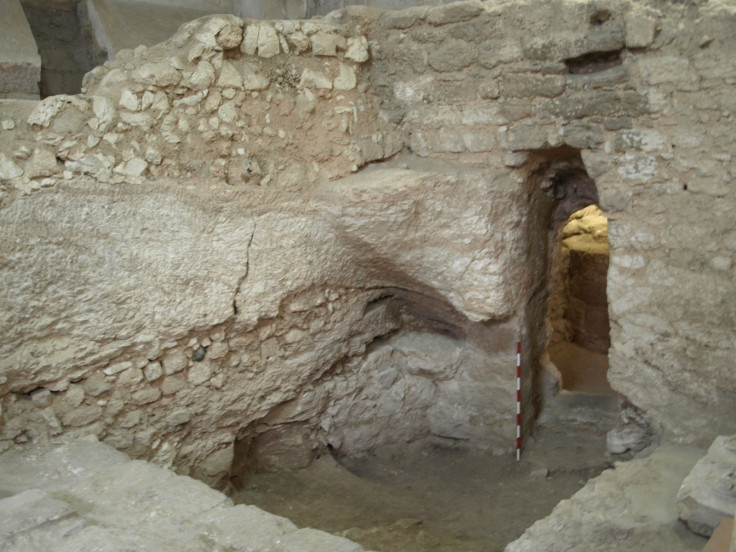Most significant Biblical archaeological findings of 2015

How accurate the Bible is to real life has been the subject of debate for some time, but ironically, as science improves and archaeology is equipped with new and more expensive machinery, researchers are slowly being able to paint a more accurate picture. This year has proved to be a fruitful year for archaeological findings relating to the Bible or Christianity in general.
IBTimes UK brings you a round-up of the most significant Biblical discoveries of the year.
Jesus's possible house
Where better to start than with one of the main 'characters' of the Bible. In March, British archaeologist Dr Ken Dark announced the discovery of a house in Nazareth which dates back to the first century and could have been the home of a young Jesus Christ. Dark has been investigating the ruins since 2006, which could be where the Son of God was raised by Mary and Joseph.

The house, which is cut into a rocky hillside, is thought to have been decorated with mosaics and tributes by the Byzantine Empire, which had power in Nazareth until the seventh century. Dark states that there is "no good archaeological reason" to discredit this as Jesus's home, but adds that he cannot be 100% sure.
"Great efforts had been made to encompass the remains of this building within the vaulted cellars of both the Byzantine and Crusader churches, so that it was thereafter protected. Both the tombs and the house were decorated with mosaics in the Byzantine period, suggesting that they were of special importance, and possibly venerated," wrote Dark in the Biblical Archaeology Review.
The city of Sodom
In the Bible, Sodom was destroyed by God as a punishment for its sinning citizens. In October, experts announced that they may have found the debauched city in eastern Jordan.
Archaeologist Steven Collins from the Trinity Southwestern University in New Mexico led the decade long excavations of a large Bronze Age city – which dates back between 3500 and 1450BC – in an area called Tall el-Hammam near to the Jordan River Valley. Included in the findings was a large chunk of the city, which included defences and plazas linked by roads.
The area is believed to have been abandoned for 700 years and initial signs pointed to an earthquake which caused widespread panic – something that the inhabitants could have interpreted as a message from a vengeful God.
Collins said: "We know very little about the Bronze Age in the south of the Jordan River Valley. Most archaeological maps of the area were blank. But what we have found is an important city-state, which was unknown before our project began.
"Tall el-Hammam matches the description of the area where Sodom was located according to the Bible. It was said to be the largest city east of Kikkar. So, I came to the conclusion that if one wanted to find Sodom, one should seek the largest city that existed in this area during the Bronze Age, in the time of Abraham. When we explored the region, Tall el-Hammam was an obvious choice, as it was five to 10 times larger than the other Bronze Age cities throughout the region, even those found beyond Jordan.
"It became an uninhabited wasteland for over 700 years but then, after those seven centuries, it started to flourish again – as indicated by the huge Iron Gate that leads into the city."
The site where Jesus was tried
Although this is not a new discovery per se, since it was actually uncovered in 1999 but closed to the public until the beginning of this year, the announcement of the place where Jesus was tried before his execution caused quite a stir at the beginning of the year.
The trial of Jesus, where Roman procurator Pontius Pilate sentenced Christ to death, is believed by some to have taken place in a part of Herod's Palace. But its exact location and the route taken by pilgrims from the trial to where Jesus was crucified and buried (known as the Via Dolorosa) continues to be hotly debated by archaeologists, historians, Christian spiritual leaders and scholars.

The Gospels state Jesus of Nazareth was brought before Pontius Pilate in the praetorium, a Latin term referring to the tent of a general in a Roman encampment. Some scholars argue the praetorium would have been located in the Roman military barracks, which was at Antonia Fortress, about 1km away, while others say Pilate would have been a personal guest of King Herod, and as such, the trial took place in the palace compound.
"There is, of course, no inscription stating it happened here, but everything — archaeological, historical and gospel accounts — all falls into place and makes sense," Shimon Gibson, an archaeology professor at the University of North Carolina, told the Washington Post.
© Copyright IBTimes 2025. All rights reserved.






















